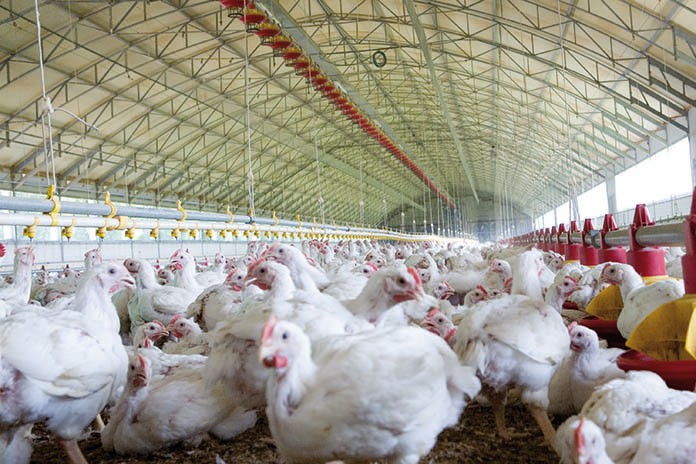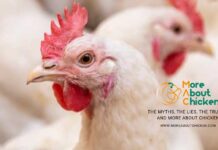
Investigations into the taste system of chickens can help to improve poultry feeding strategies. However, a comprehensive study on dietary taste preferences for broilers is lacking. Dietary preferences are conventionally tested by presenting a choice of two diets simultaneously to individual or grouped chickens (double choice test) followed by a comparison of the intakes of both diets.
Current double choice methods allow testing only a few nutrients and are carried out over relatively long periods of time. Using wheat as a delivery matrix, Cho et al. (2016) demonstrated that laying hens can show preferences in 1 hour tests. To validate this method in broilers, the current study aimed at optimizing the number of birds and feed withdrawal time prior to the test.
Two hundred and twenty four 21 day-old Ross-308 broilers were assigned to six experimental groups following a 2 × 3 factorial arrangement, with 2 levels of feed withdrawal (0 hr vs 2 hr) and 3 group sizes (1, 2 or 4 birds/cage).
Pens were divided into 8 blocks of 12 pens each resulting in 2 replications per treatment per block. Broilers were trained for 5 days to habituate to a double choice feeding regime.
Subsequently, for each pen, 4 tastants (NaCl, monosodium glutamate (MSG), citric acid (CA) and Alanine (Ala) at 3 inclusion levels (0.1%, 1% and 10%) were added to wheat and tested against a wheat only control during 10 days with two tasting sessions per day.
The differences in consumption between treatment and control were tested against 0 g (implying no difference). In addition, the percentage of tasting intake relative to the total intake of the two feeders (preference) was compared with the neutral value of 50% using the t-test. To see the effect of withdrawal and number of birds per pen on the differences in intakes, the data was analysed using the GLM procedure of SAS.
Broilers preferred complete feed to wheat (P<0.05) regardless of group size and withdrawal. The wheat-based treatments experienced very low intakes. For instance the overall intakes of 0.1% NaCl, 0.1% MSG, 0.1% CA and 0.1% Ala were respectively 1.9±0.6 g, 1.9±0.5 g, 2.6±0.5 g and 2.2±0.6 g.
Similarly the intakes of 1% inclusion level of NaCl, MSG, CA and Ala were 2.2±0.6 g, 2.0±0.6 g, 1.7±0.6 g 1.3±0.5 g.
The intakes for 10% inclusion levels of NaCl, MSG, CA and Ala were 1.7±0.5, 2.4±0.5, 1.6±0.5 and 1.9±0.5 respectively in the first test. Similar intakes were observed in the second test. Based on t-tests against 50% neutral value, rejections could be detected for 0.1% CA in 1 and 2 birds/cage (P<0.05) in the first test. Similarly 1% and 10% Ala, 10% MSG were (P<0.05) rejected at the first test in the group size with 1 bird per cage and 10% NaCl was rejected by the group with 2 birds per cage in the second test.
In conclusion, broilers could show their preferences in a short term double-choice model. However, the use of wheat as a delivery matrix resulted in an unexpected low intake. Group size did not influence the intakes, this was also observed for feed withdrawal period. The use of delivery systems alternative to wheat should be explored to improve double-choice tests in broiler chickens.
Acknowledgements
Project funded by Rural Industries Research and Development Corporation. The authors are thankful to Shahram Niknafs for help in managing the chickens and Clare A. McGrory for help with the statistical analysis.
From the Proceedings of the 2017 Australian Poultry Science Symposium

















